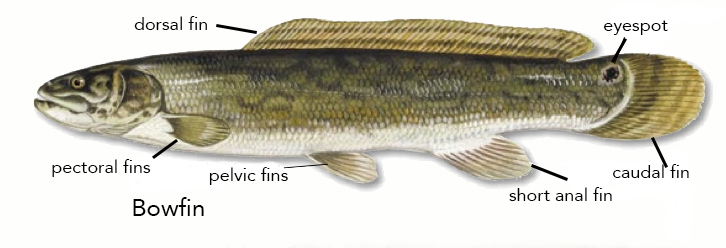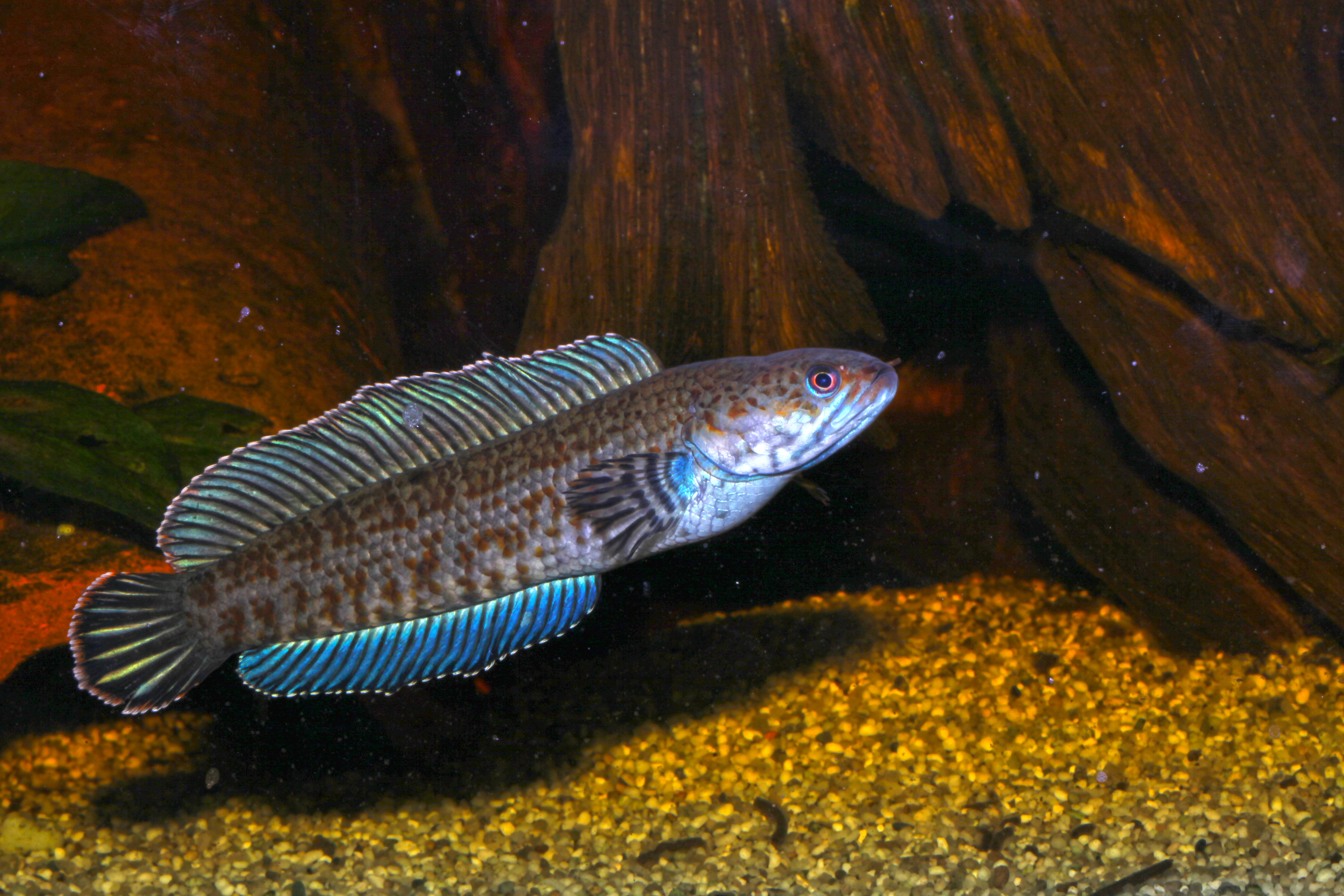|
Mudfish
Mudfish most commonly refers to all species of ''Neochanna'', native to New Zealand and south-eastern Australia. Mudfish may also refer to: Fish * Bowfin (''Amia calva''), North America * ''Channa'' or snakehead, a genus of predatory fish in Asia * ''Channa striata'', a species of snakehead fish in Asia * '' Clarias anguillaris'', African airbreathing catfish * ''Misgurnus'', a genus of true loaches found in Europe and Asia * Orange River mudfish (''Labeo capensis''), southern Africa * ''Parachanna'', a genus of snakeheads in tropical Africa * ''Protopterus'', the genus of four species of lungfish in Africa * South American lungfish (''Lepidosiren paradoxa'') Other uses * ''Mudfish'', a poetry journal founded by Jill Hoffman See also * Lungfish Lungfish are freshwater vertebrates belonging to the order Dipnoi. Lungfish are best known for retaining ancestral characteristics within the Osteichthyes, including the ability to breathe air, and ancestral structures within S ... [...More Info...] [...Related Items...] OR: [Wikipedia] [Google] [Baidu] |
Neochanna
''Neochanna'' is a genus of galaxiid fishes, commonly known as mudfish, which are native to New Zealand and south-eastern Australia. Species The recognized species in this genus are: * '' Neochanna apoda'' Günther, 1867 (brown mudfish) * '' Neochanna burrowsius'' (Phillipps, 1926) (Canterbury mudfish) * '' Neochanna cleaveri'' ( Scott, 1934) (Tasmanian mudfish) * '' Neochanna diversus'' Stokell, 1949 (black mudfish) * '' Neochanna heleios'' Ling & Gleeson, 2001 (Northland mudfish) * '' Neochanna rekohua'' (Mitchell, 1995) (Chatham mudfish) Description Mudfishes are small, growing to a maximum of . They have a tubular, highly flexible, scaleless body with rounded fins, well-developed flanges on the caudal peduncle, tubular nostrils, small or absent pelvic fins, and mottled brown colouration. Adults are active at night and are usually found in the benthic zone, while juveniles are active during the day and are found in open water. Habitat Mudfishes are found in wetlands, swamp ... [...More Info...] [...Related Items...] OR: [Wikipedia] [Google] [Baidu] |
Jill Hoffman
Jill Hoffman is an American poet, and editor. She graduated from Bennington College with a B.A., from Columbia University with an M. A., and from Cornell University with a Ph.D. She taught at Bard College, Brooklyn College, Columbia University, and The New School The New School is a private research university in New York City. It was founded in 1919 as The New School for Social Research with an original mission dedicated to academic freedom and intellectual inquiry and a home for progressive thinkers. .... She founded ''Mudfish'', in 1984, and the Mudfish Individual Poet Series (Box Turtle Press). Her work appeared in ''New York Quarterly'', ''Paris Review'', and ''The New Yorker''. Awards * 1974 Guggenheim Fellowship Works Poetry *''Mink Coat'' Holt, Rinehart and Winston, 1973, *''black diaries'', Box Turtle Press, 2000, *''The Gates of Pearl'', 2008/09 Novels *''Jilted'', Simon & Schuster, 1993, *''Topless'' References External linksMudfish website Bennin ... [...More Info...] [...Related Items...] OR: [Wikipedia] [Google] [Baidu] |
Bowfin
The bowfin (''Amia calva'') is a bony fish, native to North America. Common names include mudfish, mud pike, dogfish, grindle, grinnel, swamp trout, and choupique. It is regarded as a relict, being the sole surviving species of the Halecomorphi, a group of fish that first appeared during the Early Triassic, around 250 million years ago. The bowfin is often considered a "primitive fish" because they have retained some morphological characteristics of their early ancestors. The closest living relatives of bowfins are gars, with the two groups being united in the clade Holostei. Bowfins are demersal freshwater piscivores, commonly found throughout much of the eastern United States, and in southern Ontario and Quebec. Fossil deposits indicate Amiiformes were once widespread in both freshwater and marine environments across North and South America, Europe, Asia, and Africa. Now, their range is limited to much of the eastern United States and adjacent southern Canada, including th ... [...More Info...] [...Related Items...] OR: [Wikipedia] [Google] [Baidu] |
Channa
''Channa'' is a genus of predatory fish in the family Channidae, commonly known as snakeheads, native to freshwater habitats in Asia. This genus contains about 50 scientifically described species. The genus has a wide natural distribution extending from Iraq in the west, to Indonesia and China in the east, and parts of Siberia in the Far East. A particularly high richness of species exists in Myanmar (Burma) and northeastern India, and many ''Channa'' species live nowhere else. In contrast, a few widespread species have been introduced to several regions outside their natural range, where they often become invasive. The large and medium-sized ''Channa'' species are among the most common staple food fish in several Asian countries, and they are extensively cultured.Kumar, K., R. Kumar, S. Saurabh, M. Sahoo, A.K. Mohanty, P.L. Lalrinsanga, U.L. Mohanty and P. Jayasankar (2012). Snakehead Fishes: Fact Sheets. Central Institute of Freshwater Aquaculture, Bhubaneswar. Apart from th ... [...More Info...] [...Related Items...] OR: [Wikipedia] [Google] [Baidu] |
Channa Striata
''Channa striata'', the striped snakehead, is a species of snakehead fish. It is also known as the common snakehead, chevron snakehead, or snakehead murrel and generally referred simply as mudfish. It is native to South and Southeast Asia, and has been introduced to some Pacific Islands. Reports from Madagascar and Hawaii are misidentifications of '' C. maculata''.USGS, Southeast Ecological Science Center: Channa striata.' Retrieved 27 June 2014. A genetic study published in 2017 indicates that ''C. striata'' is a species complex. Description It is a bony fish with endoskeleton ribcage, grows up to a meter in length, though because of fishing, this size is rarely found in the wild. It has a widespread range covering southern China, Pakistan, most of India, southern Nepal, Bangladesh, Sri Lanka, and most of Southeast Asia. It has more recently been introduced to the outermost parts of Indonesia, the Philippines, and Mauritius. Reports beginning in the early 20th century that ... [...More Info...] [...Related Items...] OR: [Wikipedia] [Google] [Baidu] |
Clarias Anguillaris
''Clarias anguillaris'' is a species of African airbreathing catfish also known as the mudfish. This species is of minor importance in commercial fisheries Commercial fishing is the activity of catching fish and other seafood for commercial profit, mostly from wild fisheries. It provides a large quantity of food to many countries around the world, but those who practice it as an industry must often p .... It grows to a length of 100 cm (39.4 inches) TL. File:Clarias anguillaris foto.JPG, Clarias anguillaris File:Clarias anguillaris right.JPG, File:Clarias anguillaris open mouth.JPG, External links * Clarias Fish of Africa Fish described in 1758 Taxa named by Carl Linnaeus {{catfish-stub ... [...More Info...] [...Related Items...] OR: [Wikipedia] [Google] [Baidu] |
Misgurnus
Misgurnus is a genus of true loaches found in Europe and Asia. The origin of the name ''Misgurnus'' comes from the Greek word (to hate) and the Turkish (loud), a name given to them due to their habit of becoming very active during barometric pressure changes that occur during thunderstorms. The common names, weather loach or weatherfish, also derive from this behavior. Some species of misgurnus are eaten, mostly in Asia, and are also sold as pets in the aquarium trade. Their average size can range for 6 to over 12 inches. Species There are currently seven recognized species in this genus:Kottelat, M. (2012)Conspectus cobitidum: an inventory of the loaches of the world (Teleostei: Cypriniformes: Cobitoidei). ''The Raffles Bulletin of Zoology, Suppl. No. 26: 1-199.'' * '' Misgurnus anguillicaudatus'' (Cantor, 1842) (pond loach,oriental weatherfish) * ''Misgurnus buphoensis'' R. T. Kim & S. Y. Park, 1995 * ''Misgurnus fossilis'' (Linnaeus, 1758) (weatherfish) * ''Misgurnus mohoi ... [...More Info...] [...Related Items...] OR: [Wikipedia] [Google] [Baidu] |
Parachanna
''Parachanna'' is a genus of snakeheads native to freshwater habitats in tropical Africa. Three recognized extant (living) species are in this genus, but a phylogenetic study from 2017 indicates that a fourth, currently undescribed species also exists. One fossil species, ''Parachanna fayumensis'' Murray, 2006 dated to the Upper Eocene and Lower Oligocene is known from the Jebel Qatrani Formation of the Fayum Depression, Egypt. Species The three recognized extant species in this genus are: * ''Parachanna africana'' ( Steindachner, 1879) (African snakehead) * ''Parachanna insignis'' ( Sauvage, 1884) (brown snakehead) * ''Parachanna obscura The obscure snakehead, ''Parachanna obscura'', is a medium-sized carnivorous fish that has an elongated shape tapered on both ends and is covered in medium circular scales (cycloid). The head, resembling a snake, is long and depressed anteriorly ...'' ( Günther, 1861) (obscure snakehead) References * Freshwater fish genera Tax ... [...More Info...] [...Related Items...] OR: [Wikipedia] [Google] [Baidu] |
Protopterus
''Protopterus'' is the genus of four species of lungfish found in Africa. ''Protopterus'' was formerly thought to be the sole genus in the family Protopteridae, but more recent studies have classified it with ''Lepidosiren'' in the family Lepidosirenidae. Description African lungfishes are elongated, eel-like fishes, with thread-like pectoral and pelvic fins. They have soft scales, and the dorsal and tail fins are fused into a single structure. They can either swim like eels, or crawl along the bottom, using their pectoral and pelvic fins. The largest species reach about long. African lungfishes generally inhabit shallow waters, such as swamps and marshes. They are also found in larger lakes such as Lake Victoria. They can live out of water for many months in burrows of hardened mud beneath a dried stream bed. They are carnivorous, eating crustaceans, aquatic insect larvae, and molluscs. Biology The African lungfish is an example of how the evolutionary transition from br ... [...More Info...] [...Related Items...] OR: [Wikipedia] [Google] [Baidu] |
South American Lungfish
The South American lungfish (''Lepidosiren paradoxa'') is the single species of lungfish found in swamps and slow-moving waters of the Amazon, Paraguay, and lower Paraná River basins in South America. Notable as an obligate air-breather, it is the sole member of its family Lepidosirenidae. Relatively little is known about the South American lungfish. Additional common names include American mud-fish and scaly salamanderfish. The South American Lungfish have adapted to cope with both droughts and floods. This is normal due to the South American Lungfish adapting pulmonary mechanoreceptors. In Brazil, it is known by the indigenous language Tupi name , which means "snake-fish" (), and synonyms (), (), and (). The immature lungfish is spotted with gold on a black background; in the adult, this fades to a brown or gray color.Animal-worldSouth American Lungfish./ref> Its tooth-bearing premaxillary and maxillary bones are fused as in all Dipnoi. South American lungfish also share ... [...More Info...] [...Related Items...] OR: [Wikipedia] [Google] [Baidu] |
Lungfish
Lungfish are freshwater vertebrates belonging to the order Dipnoi. Lungfish are best known for retaining ancestral characteristics within the Osteichthyes, including the ability to breathe air, and ancestral structures within Sarcopterygii, including the presence of lobed fins with a well-developed internal skeleton. Lungfish represent the closest living relatives of the tetrapods. Today there are only six known species of lungfish, living in Africa, South America, and Australia. The fossil record shows that lungfish were abundant since the Triassic. While vicariance would suggest this represents an ancient distribution limited to the Mesozoic supercontinent Gondwana, the fossil record suggests advanced lungfish had a widespread freshwater distribution and the current distribution of modern lungfish species reflects extinction of many lineages subsequent to the breakup of Pangaea, Gondwana and Laurasia. Lungfish have historically been referred to as salamanderfish, but this t ... [...More Info...] [...Related Items...] OR: [Wikipedia] [Google] [Baidu] |



